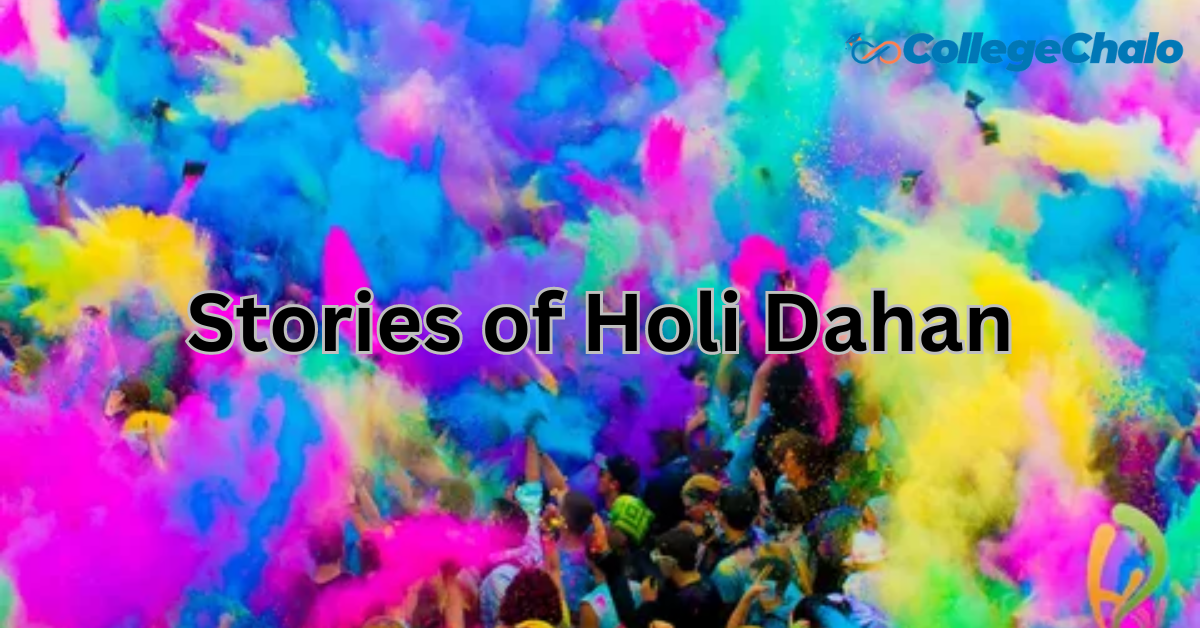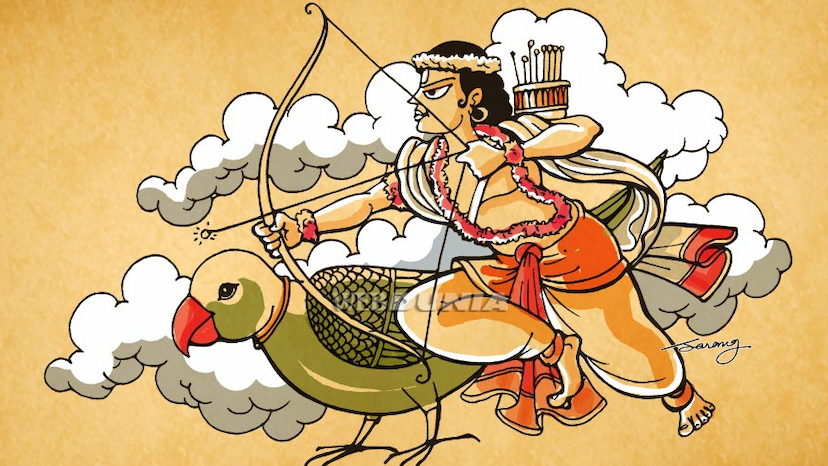5 Holi Stories Every Student Should Know: Tales of Enlightenment, Compassion, and Renewal

Holi, the colorful celebration, is dear to millions in India. Stories with deep truths and everlasting wisdom lay behind their surface joy. Understanding the underlying meaning of these Holi stories increases our cultural knowledge and provides educational insights as students. We’ll explore enlightenment, love, and rejuvenation in five intriguing Holi tales to inspire and educate. Read more, 5 Encouraging Bhagavad Gita Shlokas for Students


Explore the Rich Mythology of the 5 Holi Stories
Let’s explore 5 Holi legends’ symbolism, tradition, and significant lessons. The stories of victory over struggle, lasting love, and rejuvenation resound throughout generations, prompting us to explore Holi’s cultural richness.
1. Prahlad’s Fiery Trial: A Story of Unwavering Faith
The story of Holika and Prahlad is at the heart of Holi. It is full of themes of doing the right thing and beating evil. According to legend, Hiranyakashipu, a cruel demon king, got five magical skills that he thought made him unbeatable. People started to worship him as a god, but his own son, Prahlad, stayed true to his dedication to Lord Vishnu.
Even though Prahlad’s father constantly persecuted him, his unwavering faith was not hurt. Holika, Hiranyakashipu’s sister and a monster, worked together to kill his good son. Holika tried to burn Prahlad alive in a pyre, saying that she was immune to fire. But God intervened and changed the result so that Prahlad came out unhurt while Holika died in the fire.

The custom of Holika Dahan, where bonfires are lit to remember the victory of virtue, is the culmination of this victory of good over evil. People believe that the ashes from these fires clean, just like the power of justice to clean.
2. Krishna & Radha: A Colorful Love Story
Color fights during Holi have their roots in the story of Krishna and Radha, two gods who fell in love. People looked up to Krishna as the personification of kindness, but his dark skin caused him stress. In order to feel better, he asked his mother, Yashoda, for advice. Following her advice, Krishna painted Radha’s fair skin with bright colors as a way to show his love that went beyond social rules.

This sweet act of love started the custom of throwing colored powders, which stands for the coming together of souls and the celebration of divine love. In the magical land of Vrindavan, Krishna and Radha played in rainbow-colored rain. Their story continues to touch people’s hearts and make them want to celebrate.

3. Outsmarting Dhundhi: A Holi Tale of Childhood Mischief
The story of Dhundhi is a well-known tradition that kids love. It’s about some naughty boys who scare away a giant. Due to the fact that they are supposed to get rid of Dhundhi’s evil influence, the young boys celebrate loudly by singing and dancing.

This fun custom celebrates the victory of youth and friendship, bringing people together and making them happy. As kids get into trouble for fun, Holi represents the spirit of young energy and unbridled joy.
4. The Sacrifice of Kamadeva: A Story of Love’s Transformative Power

Kamadeva’s sacrifice during Holi is a wonderful and poignant narrative about love’s transformational power and selflessness. It is rooted on Hindu mythology and culture, exploring devotion, sacrifice, and love’s endless dance.
Many depictions of Kamadeva, the Hindu god of love and desire, show him with a sugarcane bow and flower-tipped arrows. He inspires gods and people to love and want in Hindu mythology. His sacrifice at a crucial period involving Lord Shiva and Parvati may be his most important deed.
Parvati, the goddess of fertility, loved Shiva, the destroyer of the Hindu trinity, mythology says. Shiva, engaged in his asceticism and thoughts, ignored her devotion. Parvati sought Kamadeva’s aid to gain his love, knowing his love could pierce even the hardest hearts.
Kamadeva consented to help Parvati because she knew their marriage would restore equilibrium to the cosmos. Kamadeva sneakily approached Shiva in his peaceful home with his bow. He used his flower-tipped arrows to project love at Shiva, hoping to kindle his passion.
However, Shiva, ever attentive and aware of Kamadeva, opened his third eye in reaction to the incursion. He burned Kamadeva to ashes with a look. Though terrible, Kamadeva’s sacrifice had a greater purpose.Parvati was devastated and furious after seeing Kamadeva sacrificed. Shiva was her constant love. Shiva was impressed by her devotion and Kamadeva’s sacrifice. He understood Parvati’s love and Kamadeva’s devotion.
After Kamadeva’s sacrifice, Shiva and Parvati were reunited and their love intensified. Everyone cheered when harmony was restored and love’s transformational power was shown.Kamadeva’s Holi sacrifice shows the power of love and selflessness. It shows that pure love can conquer any challenge. It also emphasizes the significance of compassion and sacrifice in global peace.
The narrative of Kamadeva’s sacrifice resonates throughout Holi, when people celebrate love, friendship, and good over evil. It reminds us to appreciate love, honor sacrifices, and work for a world of love and compassion.
5. Burning Pootana: A Story of Renewal and New Beginnings
Hindu mythology celebrates Krishna overcoming Pootana, signifying good triumphing over evil and fresh beginnings. Pootana, a powerful demon dispatched by Kamsa to assassinate Krishna, symbolizes evil, devastation, and darkness.
Krishna was magnificent and wise even as a youngster. He bravely addressed Pootana, aware of her menace. Pootana, disguised as a kind lady, approached Krishna to serve him poisoned milk. Despite knowing her real nature, Krishna cunningly let her feed him, depleting her life power.
After Krishna defeated Pootana, a fresh chapter began, representing justice and rejuvenation. Good triumphing over evil is like winter turning into spring, symbolizing life’s cycle and the boundless possibilities of fresh beginnings.
Pootana effigies are burned during Holi to celebrate the season of warmth and vitality and the vanquish of evil. In this cleansing and regeneration rite, the flames burn the darkness and announce a better future.Holi illuminates human experience and the unending fight between light and darkness, good and evil, beyond its celebratory celebration. Holi unites, kindles, and reveres love and justice via its ageless tales and vibrant rituals.
Holi reminds us that kindness wins and every ending leads to a new beginning. It honors optimism, resilience, and the power of love to overcome even the darkest forces, leaving a legacy of joy, harmony, and reju
Final Note
Let’s take these ancient tales’ teachings with us as we say goodbye to Holi. From Prahlad’s unshakeable faith to Krishna and Radha’s infinite love, each story shows compassion, perseverance, and rejuvenation. As students, may we strive to apply these lessons to our studies and personal development, bringing knowledge, love, and regeneration to our lives and those around us.
Also, read






